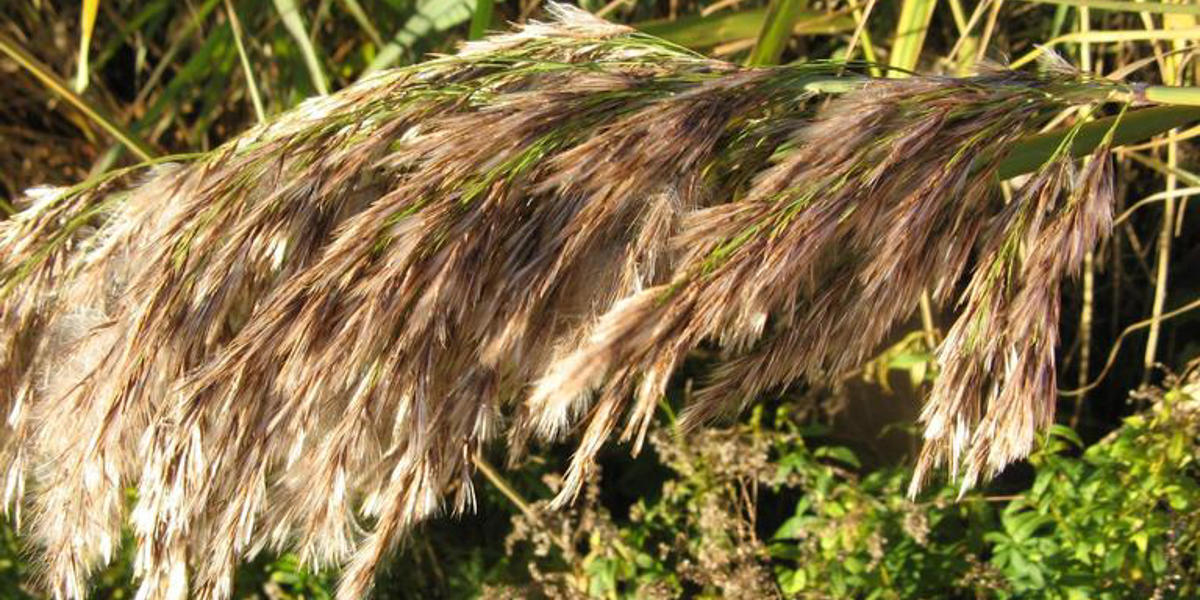
Phragmites australis subsp. australis
Image credit: Caleb Slemmons, National Ecological Observatory Network, Bugwood.org, CC BY-NC 3.0 US DEED. Cropped for use.
Background
In Minnesota, non-native Phragmites australis subsp. australis is regulated as a noxious weed. It is an invasive grass affecting wetland ecosystems in many areas of the US. The grass quickly forms dense stands, crowding out other valuable, native species, and is capable of altering hydrology and changing how nutrients are cycled in an ecosystem. Non-native Phragmites is spreading quickly and is likely to expand its current range in Minnesota and the Great Lakes Basin.
Land managers typically confirm the presence of non-native Phragmites with in-person site visits. This costs significant time and resources to locate, map, and monitor this invasive species. In addition, wetland areas are often difficult to reach on the ground.
Building on previous research, this team will use remotely sensed imagery and LiDAR to further our understanding of how Phragmites is invading Minnesota.
Research questions
- When and where is Phragmites already established in Minnesota?
- How are Phragmites populations changing over time?
- What is the effectiveness of ongoing control efforts?
Practical implications
The outcomes of this research will provide land managers the ability to map and monitor Phragmites over large areas and long intervals, especially characterizing the development and expansion of Phragmites. Such a capability would allow land managers to learn when Phragmites first appeared in an area, how populations are changing, how quickly its spreading, and whether control efforts are reducing the number and size of patches. This is critical information land managers need to develop sound management strategies.
If the proposed remote sensing methods are effective enough, this could also enable near-real-time control efforts. Monitoring of treatment outcomes could be done much more efficiently and cost-effectively.
Outcomes
This project began in January 2024 and is in progress for the next several years. Please check back at a later time for updates.
To stay connected, sign up for the MITPPC newsletter and follow us on Facebook and LinkedIn.